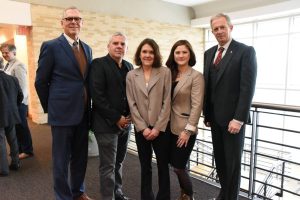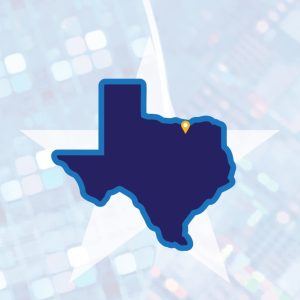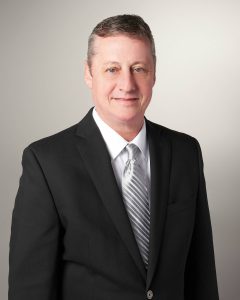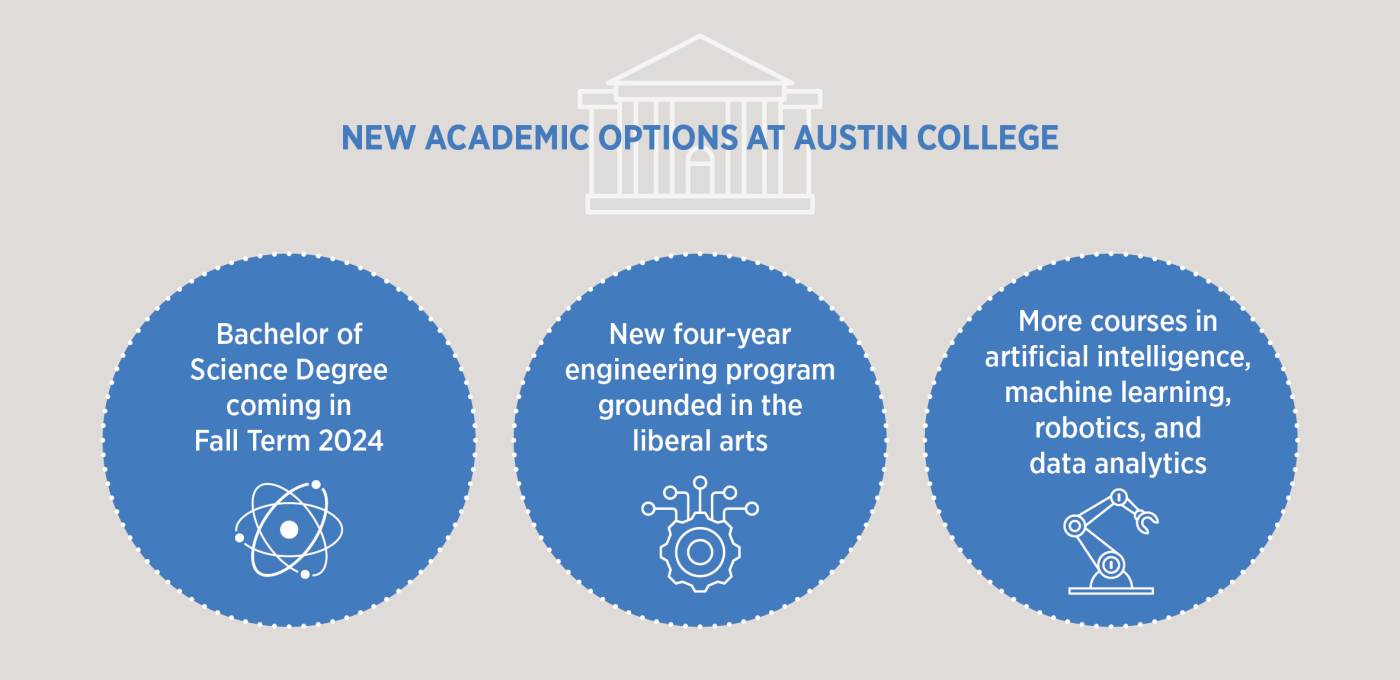By Cary S. Wacker

Photo by Cary S. Wacker
“The future of Austin College depends on being relevant. Technical skills plus liberal arts empowers people to think differently about the world; to be adaptive.”
— Dr. Beth Gill, Vice President for Academic Affairs and Dean of the Faculty
The founders of Austin College could not have seen where science would be today, but their endeavors certainly foreshadowed the College’s commitment to science education as part of a robust liberal arts curriculum.
“From the beginning, the trustees realized the need for strong science courses in the curriculum,” wrote Dr. George Landolt in his 1970 history of Austin College, Search for the Summit. A 1923 alumnus and former head of the chemistry department, Landolt was referencing a Board of Trustees report from the year 1853 that described the College’s role as an official meteorological observation partner for the Smithsonian Institute.
True to those roots, Austin College in 2023 again set its sight on bold ventures. With new degree programs, additional majors, and pioneering partnerships that are forward-thinking and student- centered, the College is primed to offer innovative learning that is relevant in a changing world.
EXPANDING ACADEMIC OPTIONS
Austin College is fortunate to be located amid the booming semiconductor corridor, sometimes called the Silicon Prairie, stretching from Dallas to Sherman along U.S. Highway 75. Major international companies involved in silicon wafer manufacturing, including Texas Instruments, GlobalWafers, and Coherent, have announced new facilities in Sherman, with more to come. With Sherman’s global reputation rising, the College’s leadership cast a vision for adding dynamic new courses informed by this technology wave.
A significant curriculum development is the addition of a Bachelor of Science degree beginning in Fall Term 2024. This addresses a critical issue: students graduating in some science or technology fields need the B.S. credential for their resumes to move forward in the job application process. Dr. Beth Gill explained that in today’s world, resumés are often machine-read—so the automated process might eliminate a Bachelor of Arts credential in fields such as neurology, computer science, data analytics, chemistry, or physics.
Happily, the rigor of the Austin College curriculum already meets the requirements in many disciplines for a Bachelor of Science degree, so virtually no changes beyond formal faculty approval were needed to implement this degree, said Gill. Plus, the offering is important for the forthcoming full engineering program. Following many months of planning, the College will hire a Founding Director and Professor of Engineering in the summer of 2024.
“We are adding an excellent four-year engineering program grounded in the liberal arts and sensitive to regional needs. It will be a distinctive program because of a well-rounded curriculum that produces critical thinkers and collaborators who gain a broader lens for the practice of engineering,” Gill explained.
The new program leverages the College’s regional position, says Gill. Although Austin College is not alone in offering an engineering program in North Texas, “Ours will be distinctive because of the high-touch education model that characterizes an Austin College degree,” noted Gill. “Here, it’s not just an engineering degree, but a transformative education experience to serve students for life.”
Michael Higgs, Professor of Mathematics and Computer Science and Dean of Sciences, explained that the engineering program’s founding director will develop the curriculum for a general engineering degree and future focus areas, and hire faculty needed to teach subdisciplines, such as electrical and mechanical engineering. The program also will provide options for people who already have associate degrees. “We want to make sure there are next steps for everyone wanting to work in the engineering field,” Higgs says, “and we can lower barriers through gateway agreements with other schools to provide more on-ramps for additional education at Austin College.”
In addition to engineering, Austin College is adding more courses in artificial intelligence, machine learning, robotics, and data analytics to prepare students in many existing disciplines for work of the future.
These options play a critical role in workforce development to meet regional needs. “Sherman is the center of gravity, the hub of the hub. This is where semiconductor is investing,” Higgs emphasized. The industry’s rapid growth in North Texas is so dramatic that the Texoma region has been named a Tech Hub by the U.S. Economic Development Administration (EDA).
A PATH FOR TRANSFORMATION

Photo by Cary S. Wacker
Austin College is poised to become the regional institutional anchor of the Red River Workforce Group for the newly formed Texoma Semiconductor Tech Hub (TSTH), a collaborative semiconductor ecosystem focused on industry innovation, supply chain resilience, and workforce development. The 41-member consortium, led by Southern Methodist University in Dallas, resulted from a successful application in 2023 to Phase I of the EDA’s Regional Technology and Innovation Hubs (Tech Hubs) grant program. Dr. David Griffith, The Jack B. Morris Chair in Entrepreneurial Studies and Director of Special Projects, Professor Michael Higgs, and Lisa Holloway ’11, Director of Corporate, Foundation, and Government Relations, played major roles in preparing the application.
The EDA also invited TSTH to prepare an application for Phase II of the Tech Hub program for additional funding.
“If awarded, the next EDA grant of up to $75 million for semiconductor industry workforce training is a game changer for the Texoma region,” Griffith said. “Our success with the Phase I grant represents Austin College’s commitment to the growth and transformation of Sherman and the Texoma region.” Griffith serves on the TSTH Executive Committee and leads the Red River Workforce Development component.
Gill notes that as a member of TSTH, the College’s location and programmatic expertise place it at the nexus of efforts to enhance the national semiconductor supply chain infrastructure while also creating new opportunities for Austin College students.
“By leveraging our central location in the heart of growing semiconductor industries and our institutional expertise in physics and engineering, computer science, data analytics, strategic management, and entrepreneurship, Austin College is uniquely situated to facilitate consortial collaboration in many ways,” she continued.
The stakes are high, but Austin College is ready. “This is not workforce development in the traditional sense; Liberal Arts for the 21st century is powerful. We are the gold standard for transforming students,” Gill concluded.
A Starring Role for Sherman
 Semiconductors—the conductive materials used to create electronic components— are integrated into a vast number of devices for daily life. Think cell phones, cars, and medical equipment, for starters.
Semiconductors—the conductive materials used to create electronic components— are integrated into a vast number of devices for daily life. Think cell phones, cars, and medical equipment, for starters.
With nearly $40 billion in investment flowing to Sherman since 2018 to build new semiconductor fabrication plants and allied industries, North Texas leaders knew they had a once-in-a-lifetime opportunity to pursue funding when the EDA’s Tech Hubs grant program opened.

The Texoma Semiconductor and Technology Hub, a geographically connected consortium of academic, industry, and government entities, was the result. Kent Sharp, president of Sherman economic Development Corporation (SEDCO), says that bringing together such a diverse group speaks to the commitment of the region to bring jobs and opportunities for the next 20 years.
“Everyone in the world has been trying to recreate Silicon Valley (in California) for years. All the elements—R&D (research and development), entrepreneurship, and money—came together there at the right time,” said Sharp.
“Now, what’s exciting for me is seeing so much flowing into our Texoma region— the R&D component, real-world projects being built, and plans for workforce development,” he said. “Sherman is well on the way to becoming the next hot spot for technology innovation.”
As a Tech Hub partner, SEDCO has facilitated conversations between Austin College and Sherman industry to explore future job needs.
“It’s exciting to see that Austin College recognizes the need for new STEM pathways to be created,” said Sharp. “Traditional engineering, chemistry, and physics curriculums need to be infused with sophisticated training in data collection and problem-solving. For example, if a microchip malfunctions in a truck, a million data points from every stage of the manufacturing process need to be analyzed. SEDCO and the economic development sector can be investing in academic research and supporting new faculty to address educational needs in data analytics and AI, among others. We are happy to be working with Austin College on ways to prepare students for jobs that may not even yet exist.”

